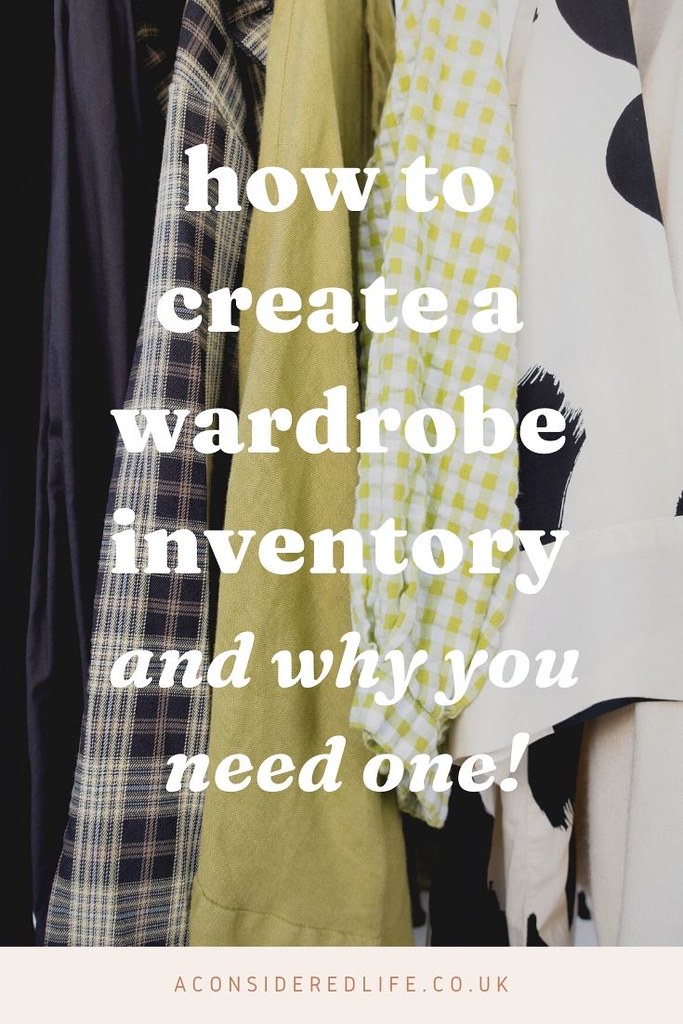
One of the best tools for cultivating personal style is a wardrobe inventory. Having a detailed list of every item of clothing in your wardrobe can help maximise your outfit options, refine your fashion choices, and create a more cohesive capsule wardrobe. If that sounds good, here is how to create a wardrobe inventory—and why you need one!
What is a wardrobe inventory?
A wardrobe inventory is a list of every item of clothing you own separated into categories, such as clothes, shoes, and accessories. It can be as straightforward or as complicated as you make it, from a full list of items including photos and outfit ideas to a simple written list of items.
Having a wardrobe inventory is one of the most useful tools for developing personal style and making better purchases. It provides an overview of your wardrobe rather than focusing on individual pieces of clothing, making it easier to be objective about your style.
What is the purpose of a wardrobe inventory?
The purpose of a wardrobe inventory is to help keep track of your wardrobe by cataloging all your clothes, making it easier to plan outfits, create capsule wardrobes, and track wears. A well put together inventory will maximise your wardrobe's potential by helping you to notice patterns in your shopping habits so you can make better decisions about the clothes you buy and get more wear out of the clothes you already own. A wardrobe inventory is the foundation for a successful capsule wardrobe.

How to Create a Wardrobe Inventory
A wardrobe inventory is more than just a list of items. It offers a way to manage your clothing, enabling you to monitor frequency of wear, assess purchasing habits, and spot trends. It will empower you to curb impulsive purchases and maximise your existing wardrobe by trying new outfit combinations.
After creating a wardrobe inventory, use it to set personal style goals and create seasonal capsule wardrobes. The result will be a more cohesive wardrobe with a refined sense of style.
Divide Clothing into Categories
To make the process of creating a wardrobe inventory easier and less overwhelming, start by grouping clothes into different categories, such as daily outfits, loungewear, hobby or sportswear, and formal attire. If you have a lot of clothing, you might need to divide these categories down even further, separating them out by season or style.
Split Categories By Clothing Type
Within these category, organise clothing by type, such as outerwear, tops, bottoms, dresses, shoes, and accessories. Types of clothing can then be split into subcategories, although this is only worth doing if you have a lot of clothes. Dresses can be divided into mini, midi, and maxi; tops into t-shirts, buttons-downs, and blouses; knitwear into jumpers, cardigans, and fleeces, etc.

List Essential Information
Once a wardrobe has been divided into categories and sectioned off into types of clothing, it's time to start the process of listing each individual item. But first, you need to decide on your method of storing this information.
There are clothing inventory apps that make planing and organising a wardrobe much quicker. The most popular ones are Acloset, Stylebook, and Smart Closet. While these apps are focused on outfit creation, the result will be an image-focused wardrobe inventory.
Another option is to use a spreadsheet—I recommend AirTable—and then use photo editing software to edit together outfit ideas and capsule wardrobes. This method provides more flexibility but doesn't have the added features of the clothing apps.
Whichever option you choose, start creating a wardrobe inventory by focusing on one category at a time, such as loungewear, and work through each clothing type, like tops or bottoms, until every individual item is listed.
Log essential information about each item of clothing including name, brand, colour, season, and style. It might also be useful to include other details such as date of purchase, whether it was purchased new or thrifted, and the garment fabric.
Having a visual representation of each item of clothing is really useful and a necessary step if you want to plan outfits or capsule wardrobes. Either take product photographs from the brand's website directly or try to find a similar item online to use instead.
Once everything in your wardrobe has been photographed and logged, your wardrobe inventory will be complete! This is an example of a completed visual wardrobe inventory and the wardrobe inventory spreadsheet used to create it.
Plan Outfits, Make Capsules, Track Wears
Creating a wardrobe inventory provides a detailed record of everything in your wardrobe, making it easier to identify shopping habits, plan outfits, put together capsule wardrobes, track wears, and develop personal style. It can be used to assess your wardrobe's overall balance and cohesive, helping you to make better purchasing decisions in the future.
Once your wardrobe inventory is complete, start by using it to plan outfits, track outfit wears, create seasonal capsules, and explore wardrobe purchases.
Pin This Post

